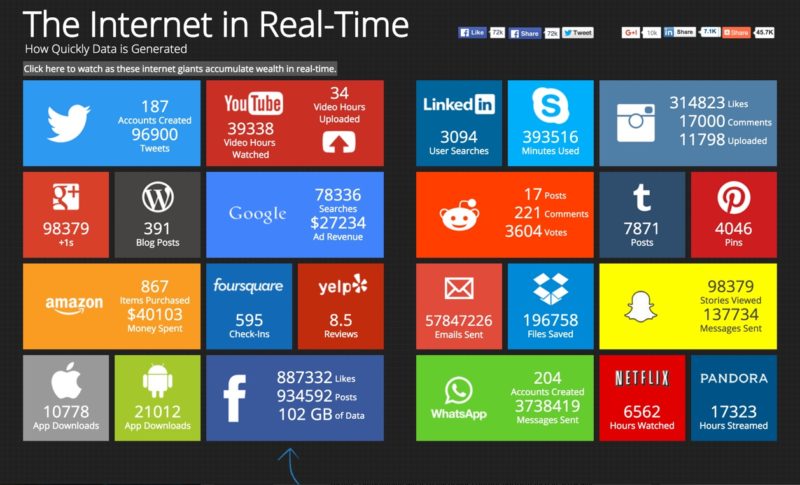The Intersection Of Search, Social & Content Marketing In 2016
Columnist Jim Yu explains why successful content marketing will depend on using the right metrics to understand your target audience and developing content that resonates with them.

Search, social and content have changed how customers and brands interact. Consumers are more independent — they take the initiative to learn about companies and brands when they realize they need something.
They do not wait for the companies to come to them. A full 81 percent of purchases begin with an internet search.
Those who have been involved in marketing for years know that fads and trends between customers and marketing strategies come and go — but the tremendous influence now seen from content clearly proves that this is not a fad.
Customers rely on content to make informed decisions, with 61 percent stating that they they feel better about brands that put out content, and they are more likely to buy from them, according to a Captora infographic published on Mashable.
Content Growth And Performance Challenge
One in six enterprise organizations now spend more than $10 million annually on content marketing, according to the Content Marketing Institute. However, the massive volume of digital content being produced — such as blog posts, white papers, images and videos — has actually fragmented consumer attention.
The question isn’t whether content is worth investing the time; the question is how much do you invest — and where — to maximize its potential?
Many content marketing campaigns put forth by companies are missing their target and failing to achieve their objectives. Although an increasing number of companies are using content in their marketing, only one in five B2C and only half of B2B companies are actually producing content that is engaged with by their target audiences, according to BrightEdge (my employer).
What is even more challenging is that while 86 percent of B2B organizations say they use content marketing, only 21 percent are successful at tracking ROI (return on investment). In other words, many of the companies that are missing the target may not even realize that they’re falling short.
In 2016, content marketing success is going to depend not only on the quality and quantity of the writing, but also on the ability of the brand to utilize data and technology to understand their target audiences, optimize and distribute content and measure ROI.
Below are a few steps that you can follow to build content campaigns that perform online.
Know The Digital Channels And The Types Of Content That Drive Results
Successfully getting content in front of the right people through the right channels requires a keen understanding of what customers are reading and where they are reading it. Content is more than just text; it’s also images, videos, infographics and other rich media.
User data can offer insights into the types of content with which customers are most likely to engage. Remember that organic is still the primary driver of content — an estimated 51 percent of website traffic comes from SEO.
Creating the content that customers want to see and knowing what they like to visit can greatly impact click-through rates to the website and the engagement rates of the visitors once they arrive.
Google places a heavy emphasis on high-quality content, but there are other factors that impact traffic. For example, we’ve found that Google Quick Answers drives about 3.5 percent of content performance.
As brands better understand their individual high-impact channels and can see how their different channels influence each other, they will be able to build a stronger marketing campaign to best attract the right consumers.
Understand Your Target Market And Audience Demand
Brands also need to have a solid understanding of the market. They need to know for whom they are writing and the types of content with which these consumers are likely to engage in the purchase funnel.
Targeting demand requires a deep understanding of your audience. Data-driven insights, gathered by using first- and third-party data sources, help identify topics and types of content that are likely to perform best.
Brands should be intimately familiar with their target audiences. They should know their pain points, their questions and their needs.
The content produced across all formats should be tailored specifically for this audience. Each brand will have to determine its market and the demand for different types of content.
Create, Optimize And Distribute The Content
Creating and developing content that is targeted, insightful and resonates with your audience takes planning and dedication. Understanding how search, social and content interact is essential for success.
Google’s emphasis on high-quality content means that focusing on user value is a must. But businesses should also be carefully mapping their content topics to personas and purchase funnels.
The content created should have a specific intention in terms of the target audience and where those personas are in their buying process. The topics and keywords should be chosen because of their relevance and importance to this chosen demographic.
Content should also be repurposed and integrated into multiple digital campaigns such as:
- Organic search
- Social media
- Speaking engagements and events
- Ebooks
- White papers
- Display marketing
- Videos
As content developers optimize their content for these different channels, it’s critical that they don’t neglect mobile optimization. The growth of mobile in the world of online marketing shouldn’t be underestimated.
As of 2015, searches from mobile devices have officially surpassed desktop searches. Failure to take these mobile users into account means that a brand is neglecting more than half of its potential audience.
Measure Results And Gauge Success
Even the most fantastic content serves little purpose if it cannot be found, consumed and measured. Companies should know intimately how their search, social and content strategies are coming together to impact their sales, conversion and revenue goals.
Finding the search, social and content marketing “sweet spot” fuels performance success.
A great example via iProspect and BrightEdge is shown below:
While measures of success vary by company and campaign, it’s vital that marketers determine which types of metrics matter most to them for content marketing. Some might choose to prioritize order value or revenue; others might place share of voice at the forefront.
Know the goals for the content, and then establish useful metrics and agreed-upon means of measuring them.
Digital content marketing has changed how customers interact with brands and has driven an evolution in how companies market their products and services. While content marketing is evolving, there is still a need for measurement models to mature.
The future of successful content marketing lies in the numbers — traffic, revenue and conversions.
Opinions expressed in this article are those of the guest author and not necessarily MarTech. Staff authors are listed here.
Related stories
New on MarTech

